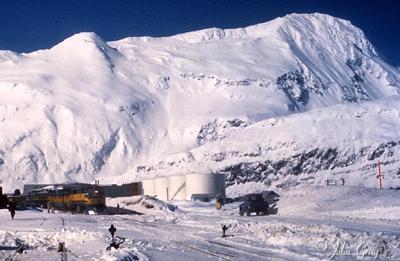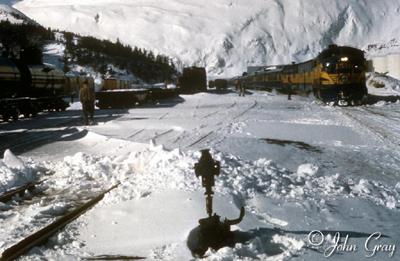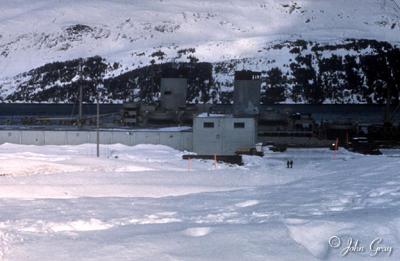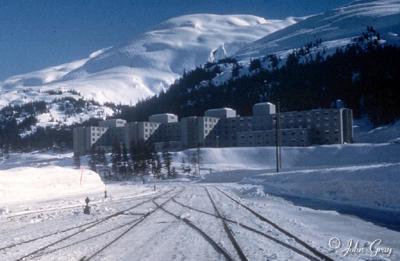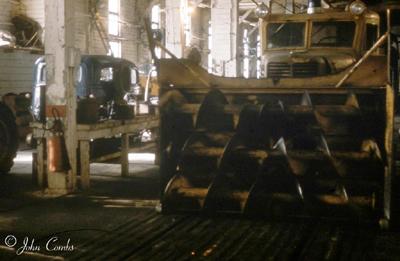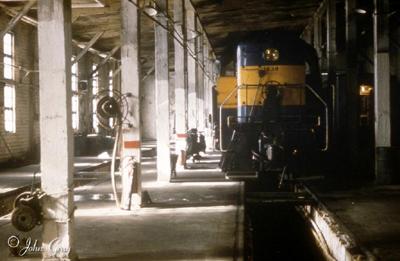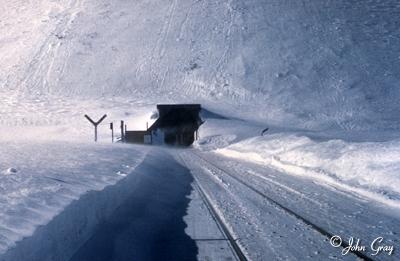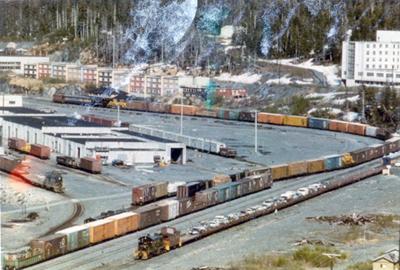Whittier Troop Train - Taken March 1960. At the time the military was still bringing most of their people into the state (but only a state for a year!!) by ship through Whittier (usually) and sometimes Seward (my wife first arrived in Alaska on a troop ship through Seward). When the ships arrived, the railroad would run troop trains into Whittier to move the troops and their personal baggage and equipment to either Anchorage or Fairbanks. Sometimes these trains would run as Passenger extras, at other times the would move as advance or second sections of scheduled trains. The latter is the case in this instance where the train is running southbound as a second three (notice that there are no green indicator lights displayed which would indicate a first section), the regular southbound Anchorage-Whittier passenger train. Note that this train is on track five in the yard (the dock lead) rather than running down the main line into the station at the south end of the yard. Notice also that this train is running with troop kitchen cars for food service as well as regular 30 and 40 series coaches along with some 20 series cars on the rear. This happened more frequently during the winter when the 30 and 40 series cars were not needed for the Fairbanks trains. During the summer these trains would sometimes show up with nothing but 20 series cars and troop sleepers. I also have a photo of the Navy troop ship, at the Whittier dock, that was associated with this rail move.
These trains almost always ran with a single FP-7, the only time that a 1500 usually got into Whittier at the time. This was one of the reasons that the railroad had 3 FP-7's. During the summer two were used on trains 5 and 6, the Fairbanks passenger trains, while one was available either for backup or, more usually, for the Whittier troop trains. In the winter it was the same situation with two FP-7's needed for trains 7 and 8, the tri-weekly overnight trains, and one used for the Whittier troop trains. Anytime that you see a photo of a passenger train south of Anchorage between 1953 and 1962 with only one FP-7 you can be almost certain it was a Whittier troop train. Special trains running to Seward (there were no regular Seward passenger trains after 1955), unless only one or two cars, always required more that one unit while the regular Whittier passenger trains usually ran with 1000 or 1001 as power until the arrival of the 1800's and conversion of the Whittier passenger train into a mixed (#23 and 24).
Finally, as you know, this day represents a particularly spectacular winter day for Whittier
John Gray
Maynard Mountain looms in the background of this photo of the windswept Whittier yard in an early spring day sometime in the mid 1950's. The white fuel tanks on the right are product receiving from the ARMY finger pier that extended out to deep water to the right. Just behind the white tanks are the Union Oil Tank farm facilities and the roof of the Union Oil building can be seen just over the train. Beyond that can be seen the domed top of the slash burner and the twin smoke stacks of the Colombia Lumber saw mill.
Truck mounted rotary snow plows were used to clear the yard. A full section crew spent the winter just cleaning switch points and digging out the low mounted ground throws that would soon plug again with drifting snow.
Pat Durand
